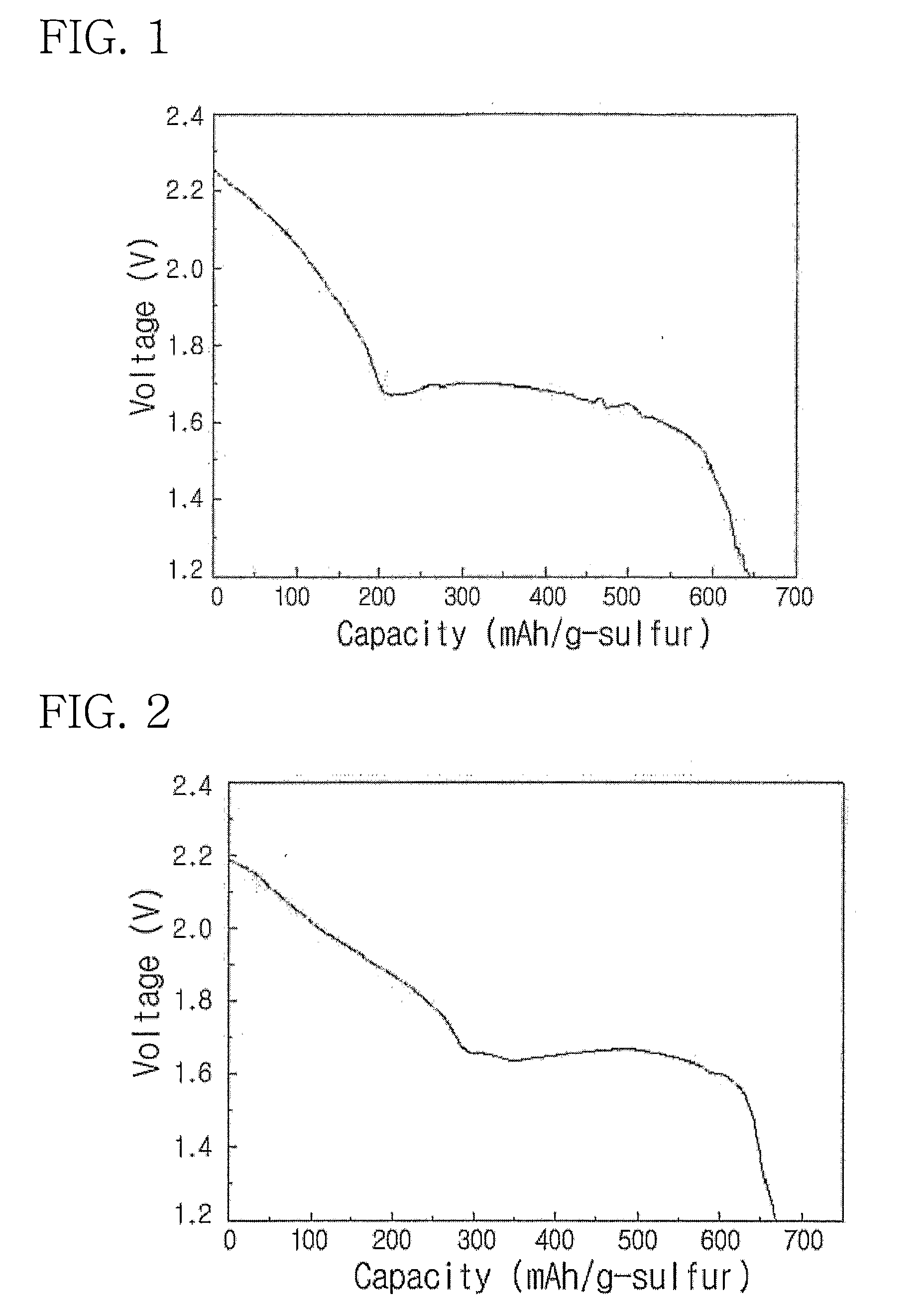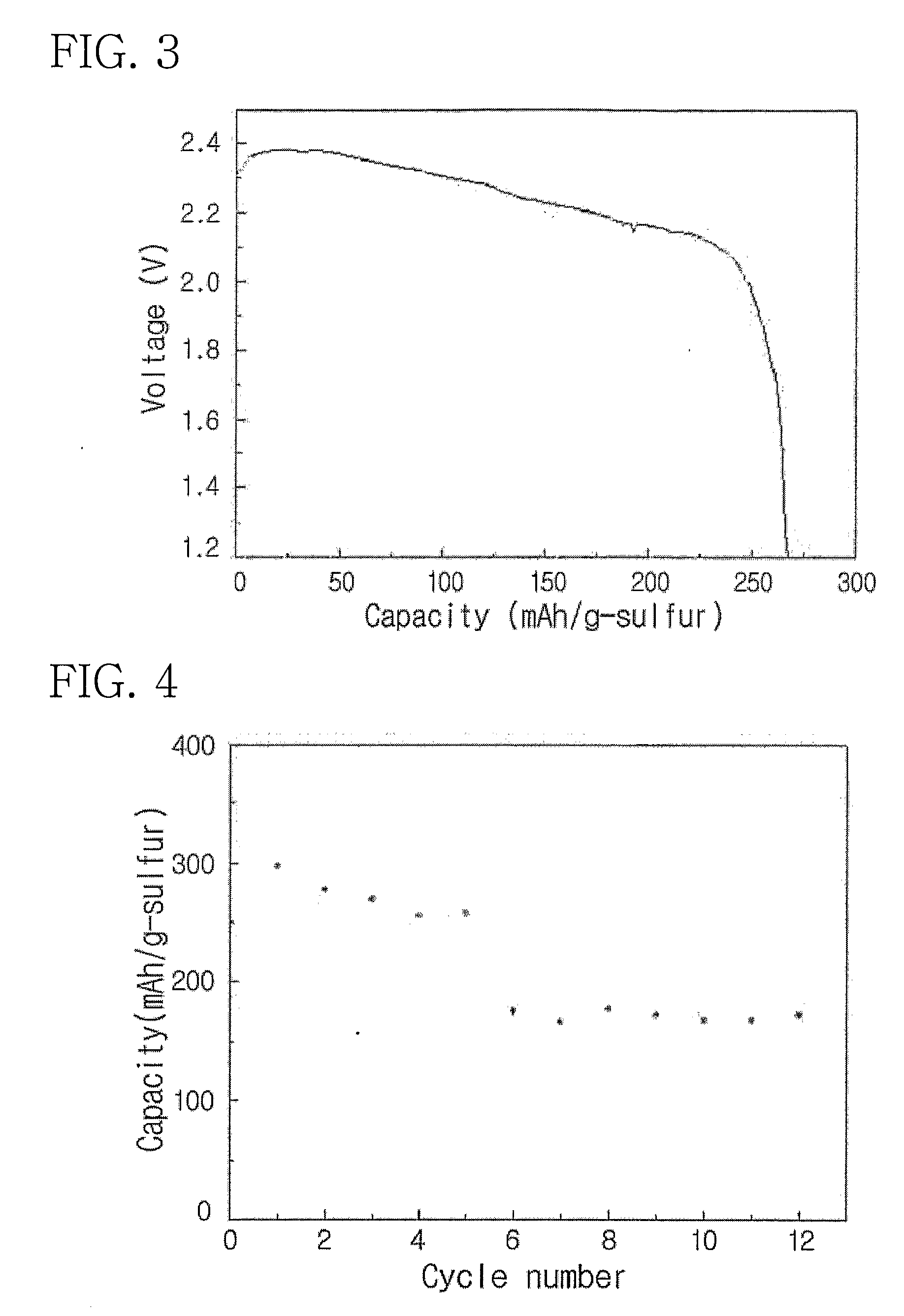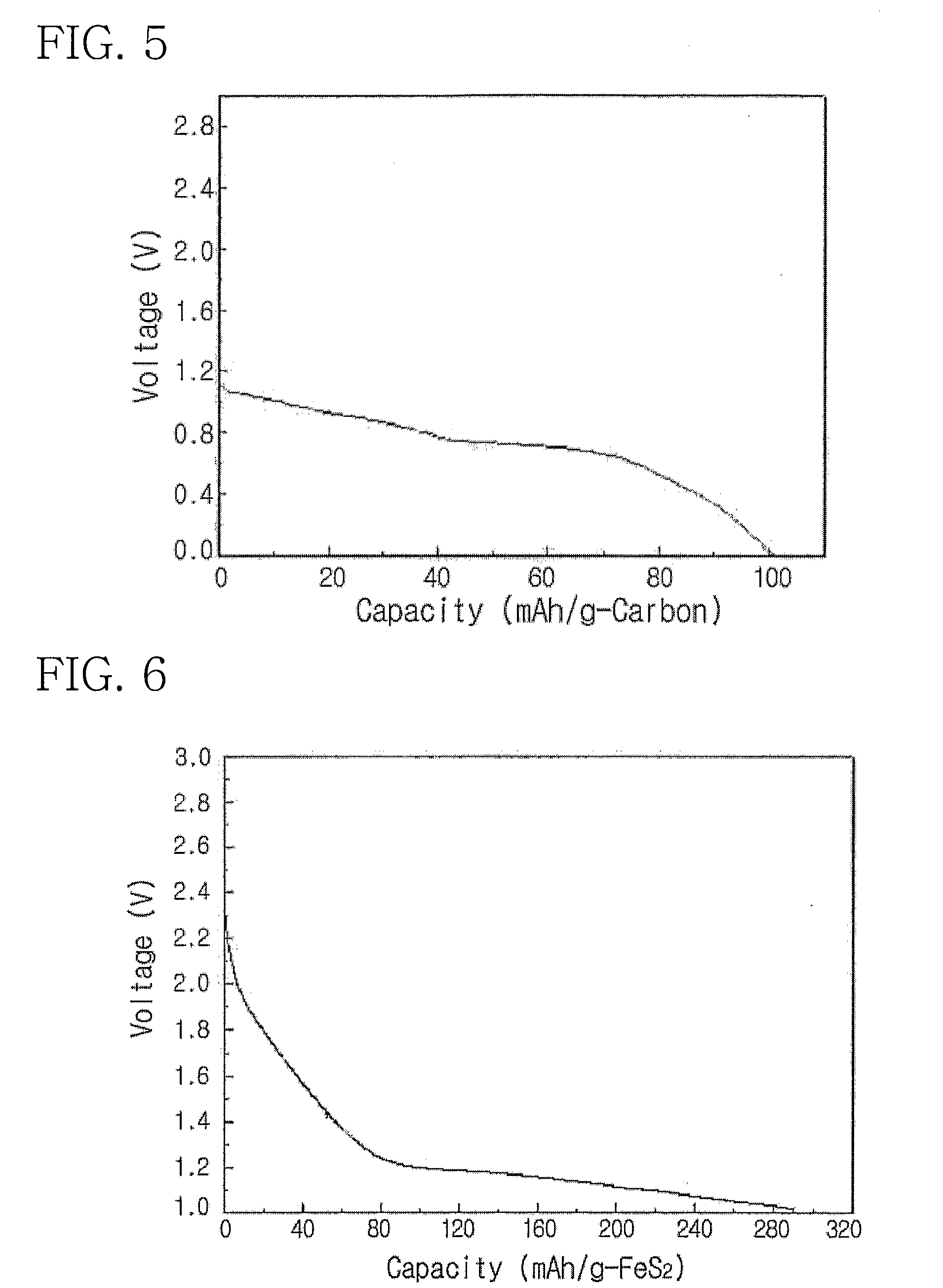Nas battery using liquid electrolyte
- Summary
- Abstract
- Description
- Claims
- Application Information
AI Technical Summary
Benefits of technology
Problems solved by technology
Method used
Image
Examples
example 1
Preparing Procedure of Liquid Electrolyte for Sodium / Sulfur Battery
[0029] Two liquid electrolytes having different composition are each prepared.
[0030] First, sodium salt titrate concentration of 0.1˜2.0 mol using ethylene carbonate and propylene carbonate as solvent. And this mixture is agitated for 3 hr with an agitator to prepare a viscous liquid phase mixed homogeneously, and then this liquid electrolyte is soaked in cell guard to use as electrolytes. The above procedure is carried out in a glove box at atmosphere of argon.
[0031] As a separate procedure with the above procedure, sodium salt titrate concentration of 0.1˜2.0 mol using tetraethylene glycol dimethyl ether as solvent. And this mixture is agitated for 3 hr with an agitator to prepare a viscous liquid phase mixed homogeneously, and then this liquid electrolyte is soaked in cell guard to use as electrolytes. The above procedure is carried out in a glove box at atmosphere of argon.
example 2
Preparing Procedure of Sodium Electrode and Sulfur / Sulfur Compound Electrode
[0032] As the negative electrode, sodium metal is used as electrode, also as the positive electrode, sulfur or sulfur compound is used as electrode.
[0033] The sodium electrode is prepared by cutting a sodium lump in a glove box to thin circular shape having a thickness of below 1 mm.
[0034] The above sulfur electrode is prepared with two kinds, one is consisted of 70 wt % of sulfur, 15 wt % of carbon and 15 wt % of polyethyleneoxide, and the other is consisted of 50 wt % of sulfur, 30 wt % of carbon and 20 wt % of polyethyleneoxide. A sample of the above composition is titrated by using acetonitrile as solvent. At this time, weight rate of the above sample and solvent is 1:4. Polyethyleneoxide and acetonitrile are agitated for 24 hr with an agitator and then introduced to an atritor together with sulfur and carbon and mixed for 2 hr. After that, it is poured on a glass panel to cool and then dried in vacuu...
example 3
Discharge Property of Sodium / Sulfur Battery
[0037] Under atmosphere of argon gas, a negative electrode, an electrolyte and a positive electrode are laminated in order to prepare sodium / sulfur battery. In this example, the above electrolyte is the electrolyte prepared at example 1, and a sodium electrode and a sulfur electrode are the electrode prepared at example 2. To test discharge property of sodium / sulfur battery, discharge capacity is measured by using a discharge tester. A condition for testing an electrode is as following; a dormancy time is maintained for 1 hour at normal temperature and then density of discharge current is controlled to 100 mA / g·sulfur, and terminal voltage is controlled to 1.2V. FIGS. 1 and 2 are the graph that represent discharge curve of a sodium / sulfur battery using the above liquid electrolyte of glymids, at normal temperature, it represent 648 mAh / g·sulfur of discharge capacity in case of 70 wt % of sulfur and 663 mAh / g·sulfur of discharge capacity in...
PUM
 Login to View More
Login to View More Abstract
Description
Claims
Application Information
 Login to View More
Login to View More - R&D
- Intellectual Property
- Life Sciences
- Materials
- Tech Scout
- Unparalleled Data Quality
- Higher Quality Content
- 60% Fewer Hallucinations
Browse by: Latest US Patents, China's latest patents, Technical Efficacy Thesaurus, Application Domain, Technology Topic, Popular Technical Reports.
© 2025 PatSnap. All rights reserved.Legal|Privacy policy|Modern Slavery Act Transparency Statement|Sitemap|About US| Contact US: help@patsnap.com



